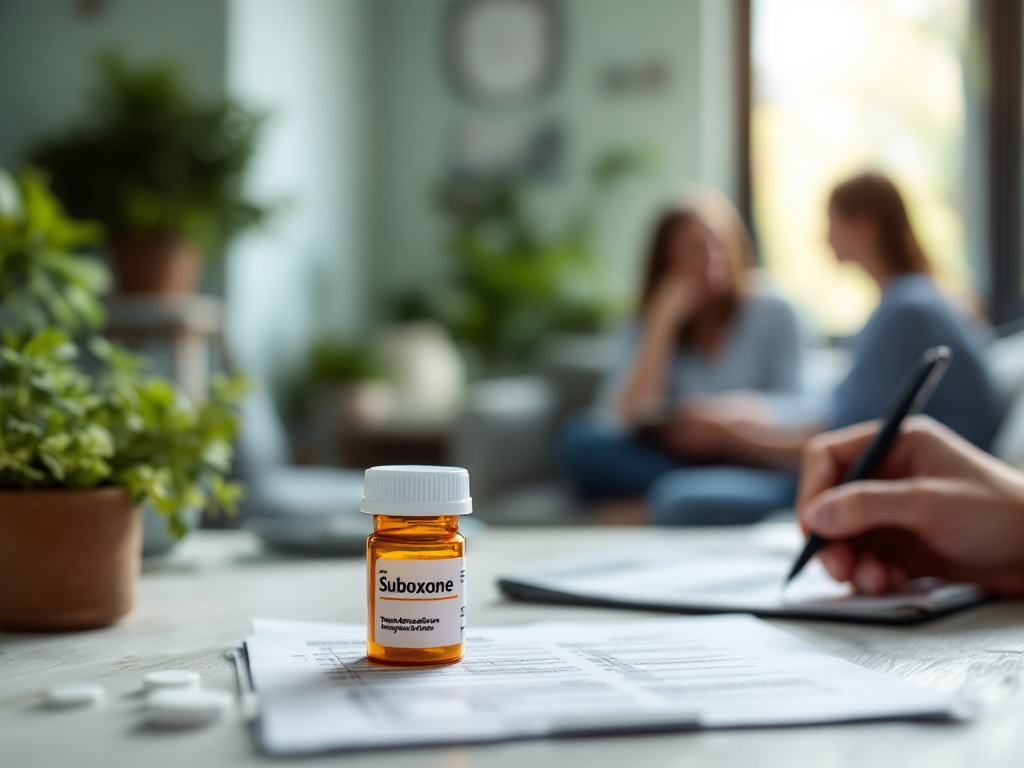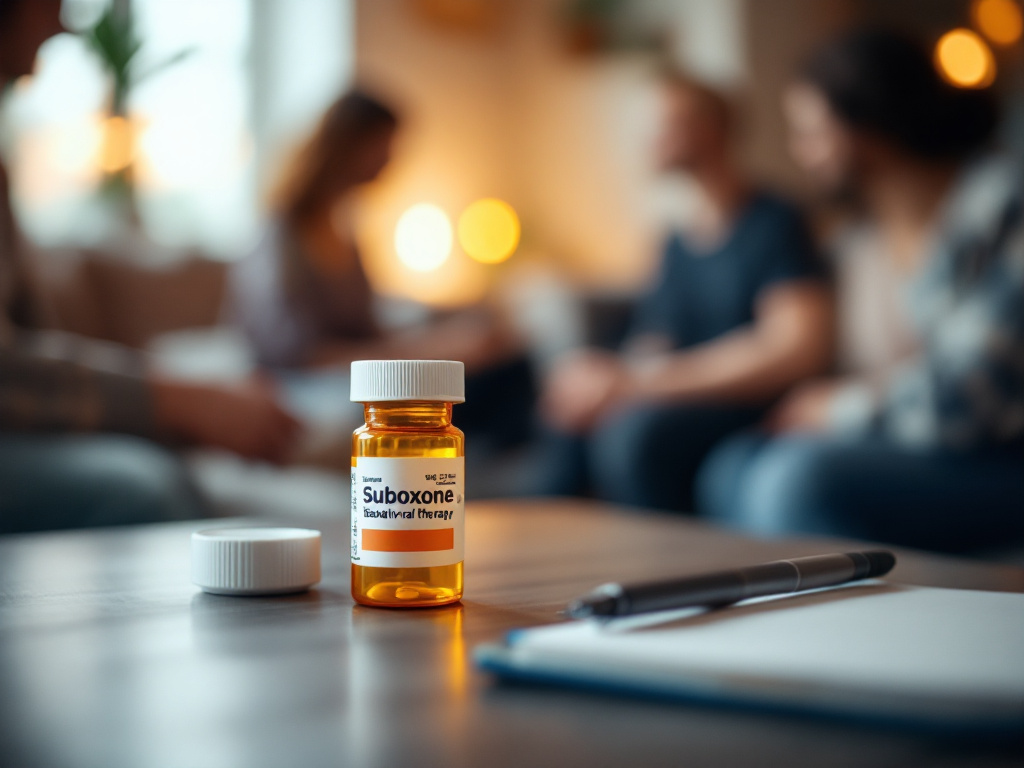Understanding suboxone stabilization
What is suboxone
Suboxone is a prescription medication combining buprenorphine, a partial opioid agonist, and naloxone, an opioid antagonist, to help you manage cravings and withdrawal symptoms during outpatient addiction treatment. By occupying opioid receptors without producing the same level of euphoria as full agonists, this formula reduces withdrawal intensity and lowers the risk of misuse. Suboxone is recognized as an evidence-based treatment for opioid use disorder (OUD) and is recommended by healthcare experts and organizations like the American Addiction Centers.
How medication works
Buprenorphine in Suboxone binds tightly to mu-opioid receptors in your brain, preventing withdrawal syndrome and reducing cravings without triggering the high produced by drugs like heroin or oxycodone. When combined with naloxone, Suboxone discourages misuse by blocking receptors if you attempt to inject the medication. As a result, you experience:
- Steady relief from withdrawal symptoms
- Reduced drug cravings
- Lower risk of overdose
Suboxone’s long half-life—24 to 42 hours—supports a once-daily dosing schedule, promoting convenience and adherence in an outpatient setting.
Preparing for your program
Assessing eligibility
Before you begin a suboxone stabilization treatment program, you need to meet certain criteria:
- Diagnosed opioid use disorder
- Abstinence from opioids for 12 to 24 hours prior to induction [1]
- Capacity to engage in outpatient care, including regular follow up and counseling
Your healthcare provider will review your medical history, current medications, and any co-occurring mental health conditions to determine if Suboxone is the right choice.
Conducting initial assessment
At Freedom Healthcare, we offer a comprehensive intake evaluation that includes:
- Medical examination and vital signs
- Psychological assessment to identify co-occurring disorders
- Review of your treatment goals and personal preferences
This initial consultation may take place in person at our outpatient addiction medicine provider or via our virtual suboxone medication clinic, ensuring you have convenient access to care. The goal is to develop an individualized plan that balances medication, counseling, and peer support.
Navigating the induction phase
Initiation process
The induction phase marks the beginning of your suboxone stabilization journey. During this stage, you will:
- Abstain from opioids for at least 12 hours to minimize the risk of precipitated withdrawal
- Take your first dose of Suboxone under clinical supervision
- Undergo close monitoring for 2 to 4 hours to assess your response and any side effects
This controlled environment helps your clinician determine the optimal starting dose and ensures your comfort as you transition to medication-assisted treatment.
Managing withdrawal symptoms
While Suboxone significantly reduces withdrawal severity, you may experience mild effects as your body adjusts. Common symptoms include:
- Nausea
- Headache
- Restlessness
- Sweating
Your healthcare team will work with you to manage these symptoms, adjusting your dose or providing supportive care as needed. Incorporating holistic therapies—such as mindfulness exercises, yoga, or light physical activity—can further alleviate discomfort and promote overall wellness.
Experiencing stabilization phase
Finding optimal dosage
Once you complete induction, you enter the stabilization phase. The focus here is to achieve a dose that:
- Eliminates withdrawal symptoms
- Minimizes cravings
- Supports daily functioning
Your clinician may adjust your dose over several weeks based on your feedback and observed response. Many programs use a flexible approach, allowing you to find the lowest effective dose. This phase is critical for building the foundation of your recovery.
Monitoring progress
Regular check-ins are essential during stabilization. Your appointments may include:
- Medication reviews to assess efficacy and side effects
- Urine drug screens to monitor adherence
- Counseling sessions to address psychological factors
Table 1. Phase comparison
| Phase | Duration | Goals |
|---|---|---|
| Induction | 1–3 days | Initiate Suboxone safely |
| Stabilization | 2–8 weeks | Optimize dosage, reduce cravings |
| Maintenance | Ongoing | Support lasting recovery |
By tracking your progress systematically, you and your care team can make informed decisions to enhance stability and reduce relapse risk.
Moving into maintenance
Developing long-term plan
After you reach a stable dose, your treatment enters the maintenance phase. This stage emphasizes:
- Sustaining opioid receptor balance
- Preventing relapse
- Fostering lifestyle changes
Your maintenance plan may involve gradual tapering when appropriate, or a longer-term medication regimen if you benefit from continued support. Consult our suboxone taper and maintenance plan resources to explore your options.
Considering taper vs maintenance
Deciding between tapering off Suboxone or remaining on maintenance treatment depends on factors such as:
- Duration of your opioid use disorder
- Presence of co-occurring mental health conditions
- Individual recovery goals
Reputable guidelines from the Centers for Disease Control and Prevention and the World Health Organization support ongoing medication-assisted treatment for many individuals, highlighting its role in reducing overdose-related deaths.
Integrating behavioral therapy
Counseling and support
Medication alone is rarely sufficient. To address underlying psychological factors, your program should include evidence-based approaches such as:
- Cognitive behavioral therapy (CBT)
- Motivational interviewing
- Trauma-informed care
These methods help you identify triggers, develop coping strategies, and build resilience. At Freedom Healthcare, our suboxone and behavioral therapy program combines medication management with personalized counseling to ensure comprehensive care.
Peer support groups
Connecting with others on a similar journey can reinforce your commitment to recovery. Peer support offers:
- A sense of camaraderie and understanding
- Accountability and encouragement
- Opportunities to share experiences and strategies
Our outpatient programs facilitate group sessions, both in person and virtually, so you can access support in a format that suits your needs.
Securing insurance coverage
Verifying benefits
Insurance coverage for Suboxone treatment is common, as it is a recognized, evidence-based intervention for opioid use disorder. To confirm your benefits:
- Contact your insurance provider to verify coverage for medication-assisted treatment
- Provide documentation of your diagnosis and treatment plan
- Confirm copayments, prior authorization requirements, and out-of-pocket limits
You can also verify whether buprenorphine treatment covered by insurance applies to your plan. Our team can assist you in obtaining insurance verified suboxone treatment, guiding you through the paperwork and appeals process if needed.
Addressing cost concerns
If financial barriers arise, explore options such as:
- Sliding scale fees based on income
- Manufacturer coupons or patient assistance programs
- Medicaid or Medicare coverage for qualifying individuals [1]
By leveraging available resources, you can make outpatient medication-assisted recovery both affordable and sustainable.
Choosing freedom healthcare
Immediate access to care
At Freedom Healthcare, our mission is to remove obstacles in your path to recovery. We offer:
- Same-day buprenorphine appointments through telehealth for rapid treatment initiation [2]
- A dedicated outpatient suboxone prescription program designed for convenience and continuity
- Flexible scheduling and virtual follow-ups via our virtual suboxone medication clinic
This streamlined approach ensures you receive the support necessary for lasting recovery from day one.
Personalized care approach
Your recovery is unique, and Freedom Healthcare tailors every aspect of your plan to your needs. From individualized medication dosing to integrated counseling and peer support, we provide comprehensive care in a supportive environment. To learn more about our buprenorphine addiction treatment services and begin your path to healing, schedule a consultation today.
If you’re ready to take the next step toward a healthier, more stable future, contact Freedom Healthcare and discover how our outpatient MAT program can empower your recovery.











